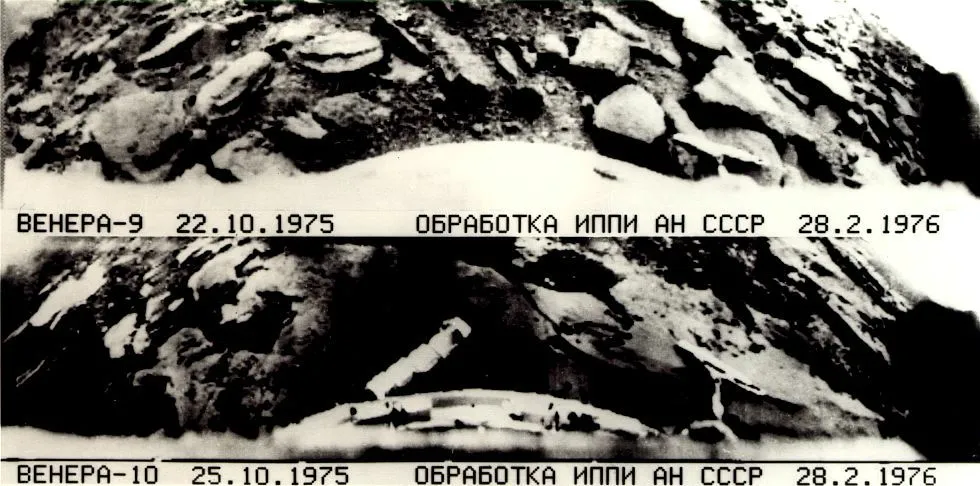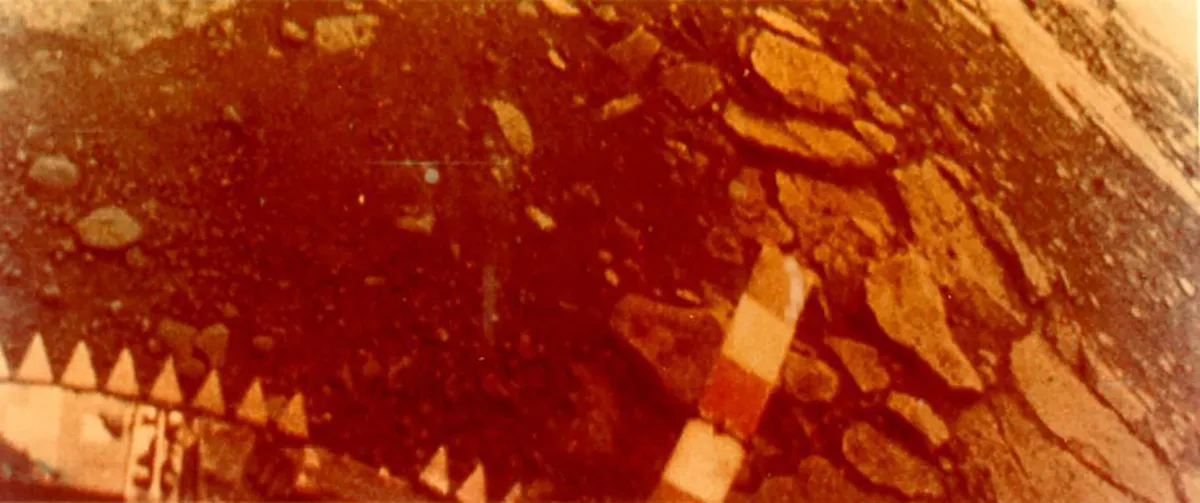An old Soviet spacecraft that was originally destined for Venus crashed to Earth on Saturday 10 May 2025.
Kosmos 482's uncontrolled entry was confirmed by the Russian space agency Roscosmos and the European Union Space Surveillance and Tracking.
Some agencies – most prominently Roscosmos – said the Soviet probe crashed into the Indian Ocean.
The European Space Agency's Debris Office predicted that the reentry of Kosmos 482 took place at 06:16 UTC (02:16 EDT) on 10 May 2025.
However, Kosmos 482's final crash-down location has not been confirmed.
More Cold War spaceflight

The probe, named Kosmos 482, was launched on 31 March 1972 and was intended to enter Venus's atmosphere, to enable scientists to learn more about the mysterious planet.
But its lander, weighing about 500kg, got stuck in orbit around Earth, where it has remained until now.
Kosmos 482's orbit had been 'decaying', bringing it closer and closer to Earth, and in the week leading up to the probe's reentry, it had been predicted to enter our atmosphere some time between 9–11 May 2025.
It was predicted to land anywhere between latitudes 52° North and 52° South.
That's most of the populated landmass of Earth, stretching from as far north as London, UK – or just north of the USA-Canada border – to as far south as the tip of South America.

Was Kosmos 482 a threat to life?
Satellites and space probes re-enter Earth orbit on a regular basis, and don't cause much trouble because the majority of Earth is covered in water, so the probability of them crashing in a populated area is low.
As well as this, most satellites and space probes are unable to withstand re-entry into Earth's atmosphere, burning up and breaking apart as they do so.
However, Venus is a toxic, poisonous, scorching planet with an atmosphere about 93 times thicker than Earth's

So any spacecraft designed to survive entry into Venus's atmosphere could likely survive entry into Earth's atmosphere.
NASA said of Kosmos 482: "The time and location of atmospheric reentry should be known more accurately over the next few days, but the uncertainty will be fairly significant right up to reentry."

Space scientists said the risk of harm to human life from Kosmos 482 crashing on Earth was low.
A European Space Agency blog about the space probe said "the risk of any satellite reentry causing injury is extremely remote.
"The annual risk of an individual human being injured by space debris is under 1 in 100 billion. In comparison, a person is about 65,000 times more likely to be struck by lightning."

Kosmos 482 explained
In Soviet spaceflight history, the 1970s was the era of the Venera programme, a series of uncrewed missions to explore Venus, the second planet from the Sun.
Venus is a toxic, scorching and inhospitable world, and so landing a spacecraft on the planet is much more risky than landing one on Mars.

The Soviets had launched Venera 8 on 27 March 1972, and it was a successful mission, beaming back valuable information about Venus to scientists on Earth.
However, four days later the Soviets launched the spacecraft that would become known as Kosmos 482.
It comprised a carrier bus and lander, the latter weighing about 495kg.
Once it reached Venus, the spacecraft was to deploy a parachute and descend, capturing data on the planet's temperature, pressure and other atmospheric properties.
But Kosmos 482 failed to escape low Earth orbit.

NASA says the Soviets attempted to launch the spacecraft from Earth orbit into a trajectory that would take it to Venus.
It's thought the spacecraft didn't achieve the required thrust to escape Earth's gravitational pull, and separated into four pieces.
Two of those pieces remained in low Earth orbit and were eventually destroyed, while two remaining pieces went into a higher orbit.

The lander had been orbiting Earth ever since, and crashed back down to Earth on 10 May 2025.
Its name, Kosmos, was assigned to all Soviet spacecraft that remained in Earth orbit, NASA says, regardless of whether or not that was their intended destination.
And so this particular probe, having not reached Venus and having remained in orbit around Earth, was duly assigned Kosmos 482.
If you did manage to see Kosmos 482 or capture an image of it, we'd love to hear from you. Get in touch by emailing contactus@skyatnightmagazine.com

